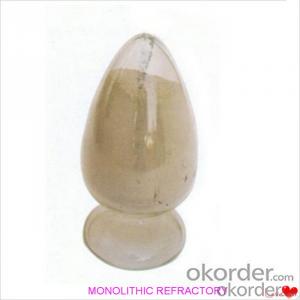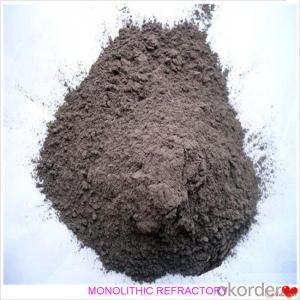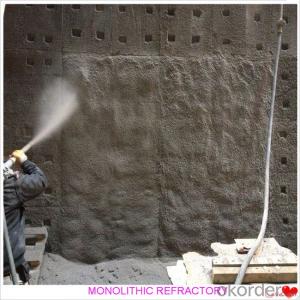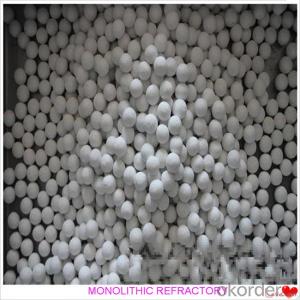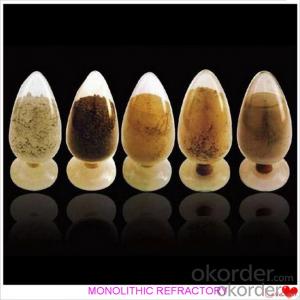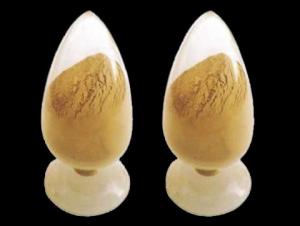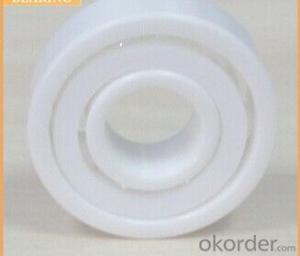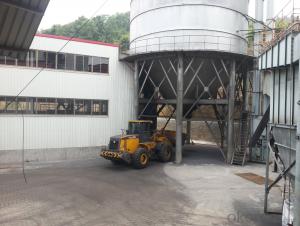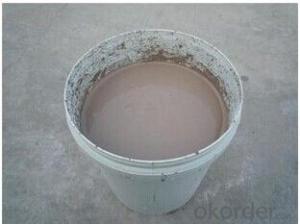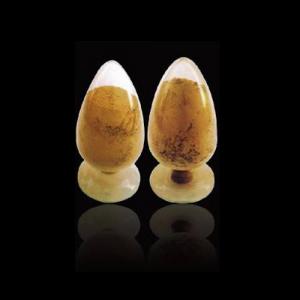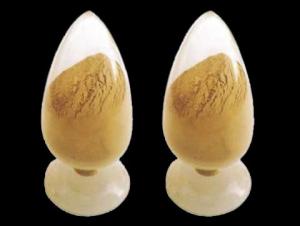Portland Cement 42.5 Castable A STD For Fireplace and Industrial Furnace
- Loading Port:
- China main port
- Payment Terms:
- TT OR LC
- Min Order Qty:
- 1000 kg
- Supply Capability:
- 3000000 kg/month
OKorder Service Pledge
OKorder Financial Service
You Might Also Like
Portland Cement 42.5 Castable A STD For Fireplace and Industrial Furnace
Product Description:
Portland cement 42.5 castable is manufactured according to international standards. The product is famous for its excellent abrasion resistance and low thermal conductivity. Further, these can be provided in different specifications as required by the clients. The Portland cement 42.5 castables are used high purity raw materials and additives as the main material, and made of under superfine powder adding technology.
Product Advantages:
The material has excellent structural stability and air tightness, and has high physical and chemical properties, also has a fine working ability.They should be used with the same material products.
Product Applications:
For feature of Portland cement 42.5 castable, they have excellent abrasion resistance, thermal shock resistance, high-temperature resistance, anti-corrode and have high intensity.
Designed for refractory lining of blast furnace iron and slag runners, skimmers and soon
They can be used in troughs of small and mid size BFs and in all positions of the troughs where fast tapping is required.
Product Specifications:
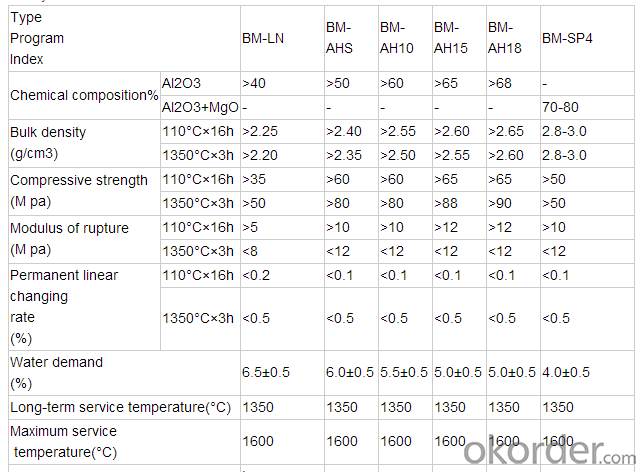
FAQ:
1. How you can control your quality?
For each production processing, we have complete QC system for the chemical composition
and Physical properties. After production, all the goods will be tested, and the quality certificate
will be shipped along with goods.
2. What's your delivery time?
It usually needs about 20days- 45 days after receiving the deposit.
3. Do you provide free samples?
Yes, we can provide a free sample for testing, If we have sample in stock,
The quantity based on the material type, The buyer should bear all the shipping costs.
4. What's your payment terms?
We can accept 30% deposit, 70% balance before shipment for ordrs over $ 2000.
5. Can we visit your Company?
Yes, certainly. You are very welcome to China and we will be honored to have a customer and friend.
Product Picture:
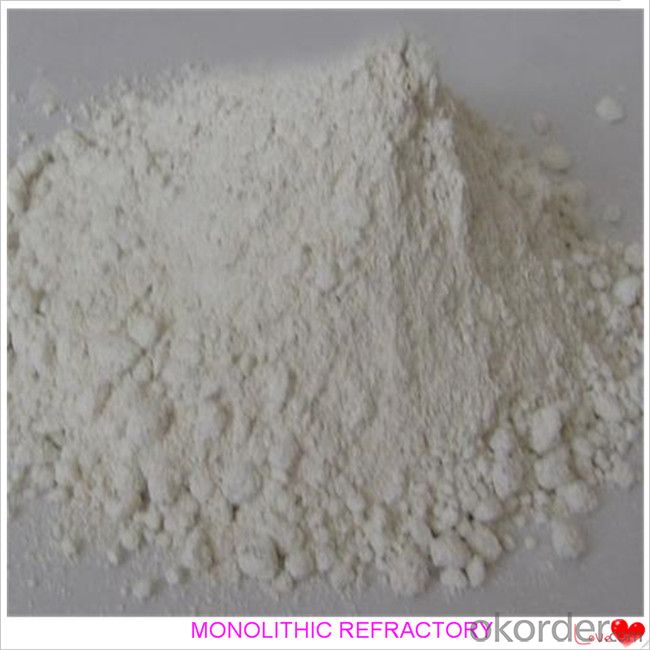
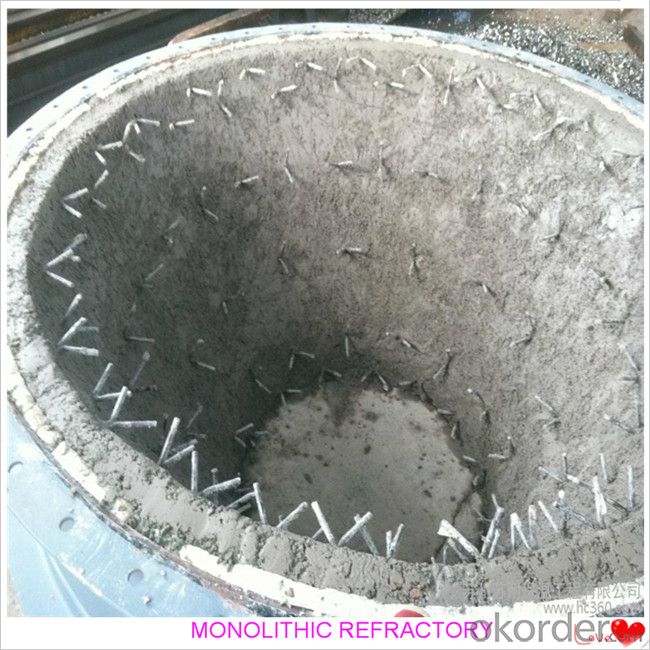
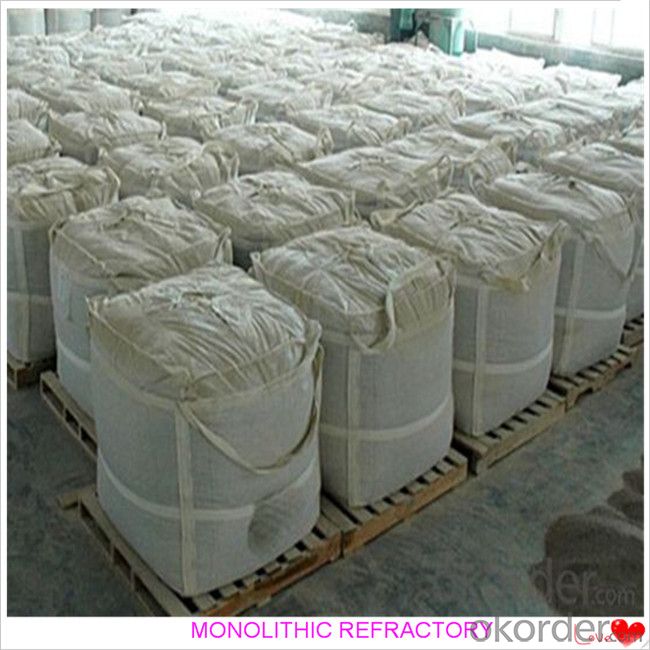
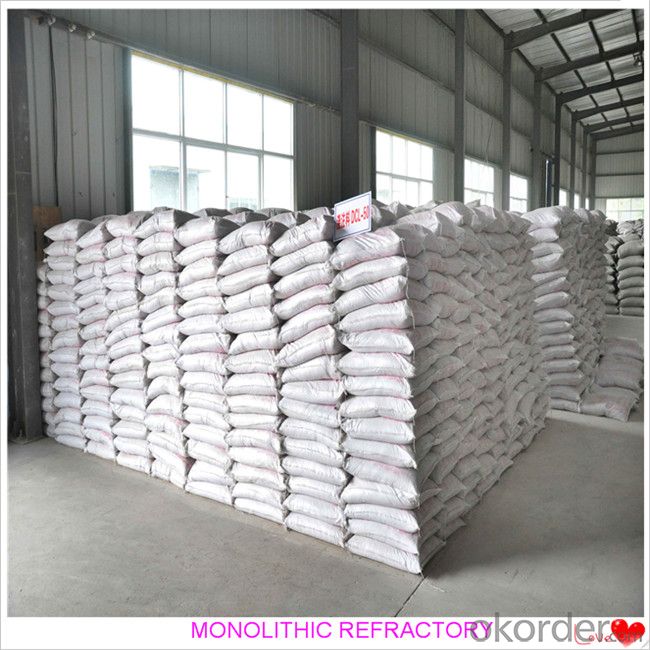
- Q:How do monolithic refractories enhance the performance of ladles and tundishes?
- Monolithic refractories have a crucial role in enhancing the performance of ladles and tundishes in multiple ways. To begin with, their high thermal stability and resistance to thermal shock are well-known. When ladles and tundishes are subjected to extreme temperatures and thermal cycling during the transfer of molten metal, monolithic refractories provide exceptional insulation and structural integrity. This ensures that the ladles and tundishes can endure these harsh conditions without suffering from cracks or failures. Additionally, monolithic refractories offer outstanding resistance to corrosion. In the environments of ladles and tundishes, the presence of molten metal, slag, and other chemicals can lead to corrosion and erosion of the lining. However, monolithic refractories are specifically designed to resist these corrosive agents, extending the lifespan of ladles and tundishes and reducing the need for frequent repairs or replacements. Another advantage of monolithic refractories lies in their ability to form a seamless and tight lining. Unlike traditional brick or tile linings, which can deteriorate over time due to joints, monolithic refractories are typically applied as a single, continuous layer. This seamless lining significantly reduces the risk of metal and slag penetration, ensuring better containment of the molten metal and preventing contamination. Furthermore, monolithic refractories offer versatility and ease of installation. They can be easily shaped and applied to various complex geometries, allowing for customized linings in ladles and tundishes. This versatility also enables faster installation and reduces downtime during maintenance and repairs. In conclusion, the utilization of monolithic refractories in ladles and tundishes leads to improved performance, increased operational efficiency, and reduced costs. Their ability to withstand extreme temperatures, resist corrosion, provide a tight lining, and offer ease of installation makes them the preferred choice in the steel and foundry industries.
- Q:How do monolithic refractories improve the efficiency of ladle and tundish drying furnaces?
- Monolithic refractories improve the efficiency of ladle and tundish drying furnaces in several ways. Firstly, monolithic refractories offer a high degree of thermal insulation. These refractories have low thermal conductivity, which means they can effectively reduce heat transfer from the furnace to the surrounding environment. This insulation property helps to minimize heat losses, allowing the furnace to maintain a higher temperature for a longer period of time. As a result, the drying process becomes more efficient as the heat is retained within the furnace, reducing the overall energy consumption. Secondly, monolithic refractories have excellent resistance to thermal shock. During the heating and cooling cycles of the furnace, rapid temperature changes can cause stress and cracks in the refractory material. However, monolithic refractories are designed to withstand these thermal shocks and maintain their structural integrity. This durability ensures a longer lifespan of the refractory lining, reducing the need for frequent repairs or replacements. Consequently, the furnace operates at optimal efficiency without the downtime associated with maintenance. Additionally, monolithic refractories provide good mechanical strength and abrasion resistance. These properties are crucial in ladle and tundish drying furnaces, as they are exposed to mechanical stresses and abrasive materials such as molten metal and slag. The use of monolithic refractories ensures that the lining can withstand these harsh conditions without undergoing structural damage. This resistance to wear and tear increases the overall efficiency of the furnace, as it can operate for longer periods without interruptions. Lastly, monolithic refractories offer greater design flexibility compared to traditional brick or tile refractories. Their ability to be cast or gunned onto the lining surface allows for easy installation and repair. This flexibility enables the furnace to be customized and adapted to specific requirements, ensuring optimal heat distribution and efficient drying processes. In conclusion, monolithic refractories improve the efficiency of ladle and tundish drying furnaces through their thermal insulation, resistance to thermal shock, mechanical strength, and design flexibility. By reducing heat losses, increasing durability, withstanding harsh conditions, and allowing for easy installation and repair, these refractories optimize the performance and energy efficiency of the furnaces.
- Q:How do monolithic refractories contribute to the quality of iron and steel products?
- Enhancing the quality of iron and steel products is a crucial role played by monolithic refractories. These refractories consist of a single, solid structure that grants them high resistance against thermal and mechanical stresses. Their unique properties make them suitable for a range of high-temperature applications in the iron and steel industry. To start with, monolithic refractories excel in thermal insulation, maintaining a consistent temperature within furnaces and kilns. This temperature stability is vital for the proper heat treatment of iron and steel, ensuring ideal metallurgical properties and reducing the risk of defects. By preventing heat loss, monolithic refractories promote efficient energy utilization, resulting in cost savings and environmental benefits. In addition, monolithic refractories demonstrate remarkable endurance in the face of harsh operating conditions. The iron and steel manufacturing process involves extreme temperatures, aggressive chemical environments, and mechanical stresses. Monolithic refractories exhibit exceptional resistance to these conditions, ensuring durability and longevity. Their ability to resist thermal shock prevents cracking or spalling, which can lead to contamination and compromised product quality. Furthermore, monolithic refractories provide excellent corrosion resistance, shielding iron and steel products from chemical reactions with molten metal, slag, and other aggressive substances. This resistance not only preserves the integrity of the refractory lining but also prevents contamination of the metal, resulting in improved product quality. Monolithic refractories also offer flexibility in design and installation. They can be shaped, cast, or gunned into various complex geometries, allowing for customization based on the specific requirements of the iron and steel production process. This versatility ensures optimal lining performance, maximizing efficiency and product quality. In conclusion, monolithic refractories significantly contribute to the quality of iron and steel products. Their thermal insulation properties, resistance to harsh operating conditions, corrosion resistance, and design flexibility all play a vital role. By providing a reliable and durable lining in high-temperature applications, monolithic refractories help guarantee consistent and high-quality output in the iron and steel industry.
- Q:How do monolithic refractories perform in electric arc furnace roof applications?
- Due to their unique properties and characteristics, monolithic refractories are extremely effective when used in electric arc furnace (EAF) roof applications. Comprised of a single, solid material, these refractories offer several advantages specific to this application. To begin with, monolithic refractories provide exceptional thermal insulation, a critical factor in EAF roof applications. Traditional brick refractories can suffer structural damage from the intense heat generated in the furnace. However, monolithic refractories possess a higher resistance to thermal shock, reducing the risk of cracking and spalling. This ensures that they maintain their integrity and insulation properties even under extreme temperature conditions. Furthermore, monolithic refractories exhibit high strength and abrasion resistance, guaranteeing their durability and longevity in EAF roof applications. The roof of an electric arc furnace is subjected to harsh conditions, including the impact of scrap materials and the erosive effects of molten metal and slag. Monolithic refractories are specifically designed to withstand these challenges, offering superior resistance to mechanical wear and erosion. Another advantage of monolithic refractories lies in their ease of installation. Unlike traditional brick refractories, which necessitate time-consuming and complex installation processes, monolithic refractories can be applied rapidly and efficiently. They can be cast, gunned, or sprayed onto the roof surface, adapting to any shape or contour. Consequently, installation or repair downtime is reduced significantly. Moreover, monolithic refractories contribute to increased energy efficiency in EAF roof applications. Their superior insulation properties minimize heat loss, resulting in reduced energy consumption and cost savings. This is particularly crucial for electric arc furnaces, as their efficiency and productivity heavily rely on maintaining high temperatures for metal melting and processing. Any heat loss can have a significant impact on these factors. In conclusion, monolithic refractories are highly suitable for electric arc furnace roof applications due to their exceptional thermal insulation, strength, abrasion resistance, ease of installation, and energy efficiency. These refractories offer significant advantages over traditional brick refractories, ensuring optimal performance and extended service life in the demanding environment of an electric arc furnace.
- Q:How do monolithic refractories contribute to the overall efficiency of ladle refining processes?
- The overall efficiency of ladle refining processes is greatly enhanced by the use of monolithic refractories. Ladle refining, a critical step in steelmaking, involves the removal of impurities and the addition of alloying elements to achieve the desired steel properties. Unshaped refractory materials, known as monolithic refractories, offer numerous benefits that contribute to the efficiency of this process. To begin with, monolithic refractories provide excellent thermal insulation. As ladle refining processes involve high temperatures, it is crucial for the refractories to withstand and contain these temperatures. Monolithic refractories have a low thermal conductivity, which minimizes heat loss from the ladle. This insulation helps maintain the desired temperature within the ladle, enabling efficient refining and reducing the energy required for heating. Furthermore, monolithic refractories exhibit high resistance to chemical attack and erosion. During ladle refining, the steel is exposed to various chemical reactions and corrosive elements. Monolithic refractories are specifically designed to withstand these harsh conditions, effectively protecting the ladle from chemical attack and erosion. This resistance ensures that the refractories maintain their structural integrity, preventing any contamination of the steel and extending the lifespan of the ladle. Additionally, monolithic refractories offer easy installation and repair. Unlike traditional brick refractories, monolithic refractories can be applied as a single, homogeneous layer, eliminating the need for complex bricklaying techniques. This ease of installation reduces downtime during ladle maintenance and repair, thus improving the overall efficiency of the refining process. Moreover, monolithic refractories can be easily patched or repaired as needed, further minimizing downtime and ensuring continuous operation. In conclusion, monolithic refractories play a significant role in enhancing the overall efficiency of ladle refining processes. Their exceptional thermal insulation properties, resistance to chemical attack and erosion, and ease of installation and repair all contribute to improving the efficiency and productivity of ladle refining. By providing a reliable and durable lining for the ladle, monolithic refractories help maintain the desired temperature, prevent contamination, and minimize downtime, ultimately resulting in improved quality and yield of the refined steel.
- Q:How do monolithic refractories improve the lining of converters and refining vessels?
- Monolithic refractories play a crucial role in improving the lining of converters and refining vessels in several ways. Firstly, monolithic refractories offer excellent thermal insulation properties, which helps in maintaining the desired temperature inside the converters and refining vessels. This is important because high temperatures are required for various metallurgical processes to occur effectively. Secondly, monolithic refractories have high chemical resistance, which is vital in the harsh conditions of converters and refining vessels. These vessels often come into contact with corrosive materials and aggressive slags, and the monolithic refractories prevent the lining from deteriorating or being eroded by these substances. Moreover, monolithic refractories provide superior mechanical strength and stability, ensuring that the lining remains intact even under high operational stresses. This is especially important in converters and refining vessels where there are frequent mechanical movements and thermal expansions. Additionally, monolithic refractories offer easy installation and repair. Unlike traditional bricks, which require time-consuming and complex assembling, monolithic refractories can be applied as a single mass, reducing downtime during installation or repair. This feature saves both time and cost in maintaining the lining of converters and refining vessels. Overall, the use of monolithic refractories in the lining of converters and refining vessels significantly enhances their performance and longevity. They provide excellent thermal insulation, chemical resistance, mechanical strength, and ease of installation and repair, ensuring efficient and reliable operation in the metallurgical processes.
- Q:What are the key properties and characteristics of monolithic refractories?
- Monolithic refractories are a type of refractory material that is manufactured in a single piece or mass, unlike traditional refractory bricks or shapes. The key properties and characteristics of monolithic refractories include their high heat resistance, excellent thermal conductivity, and ability to withstand extreme temperatures and thermal shocks. They also have good chemical resistance, which makes them suitable for use in various industrial applications. Additionally, monolithic refractories offer ease of installation and repair due to their flexibility and ability to conform to different shapes and structures.
- Q:How do monolithic refractories enhance the performance and longevity of furnaces?
- Monolithic refractories enhance the performance and longevity of furnaces by providing superior thermal insulation properties, excellent resistance to thermal shocks, and high mechanical strength. They create a seamless lining, eliminating joints and weak points, which reduces heat loss and prevents the penetration of molten metals or aggressive chemicals. Moreover, monolithic refractories offer flexibility in design and installation, allowing for customized shapes and sizes to maximize the efficiency of the furnace. Overall, their use enhances the overall heat transfer, reduces energy consumption, and extends the lifespan of the furnace.
- Q:How do monolithic refractories improve the efficiency of ladle and tundish preheating furnaces?
- Monolithic refractories improve the efficiency of ladle and tundish preheating furnaces by providing superior insulation and heat retention properties. These refractories are designed to withstand high temperatures and reduce heat loss, ensuring that the furnaces reach and maintain the desired preheating temperatures more efficiently. Additionally, monolithic refractories offer excellent thermal shock resistance, preventing cracks and damage that can negatively impact furnace performance. Overall, the use of monolithic refractories in ladle and tundish preheating furnaces helps to optimize energy consumption and enhance the overall efficiency of the preheating process.
- Q:Can monolithic refractories be used in electric arc furnaces and induction furnaces?
- Yes, monolithic refractories can be used in both electric arc furnaces and induction furnaces. Monolithic refractories are versatile and can withstand the high temperatures and thermal shocks generated in these types of furnaces. They are often preferred due to their ease of installation, improved energy efficiency, and suitability for various furnace lining applications.
1. Manufacturer Overview |
|
|---|---|
| Location | |
| Year Established | |
| Annual Output Value | |
| Main Markets | |
| Company Certifications | |
2. Manufacturer Certificates |
|
|---|---|
| a) Certification Name | |
| Range | |
| Reference | |
| Validity Period | |
3. Manufacturer Capability |
|
|---|---|
| a)Trade Capacity | |
| Nearest Port | |
| Export Percentage | |
| No.of Employees in Trade Department | |
| Language Spoken: | |
| b)Factory Information | |
| Factory Size: | |
| No. of Production Lines | |
| Contract Manufacturing | |
| Product Price Range | |
Send your message to us
Portland Cement 42.5 Castable A STD For Fireplace and Industrial Furnace
- Loading Port:
- China main port
- Payment Terms:
- TT OR LC
- Min Order Qty:
- 1000 kg
- Supply Capability:
- 3000000 kg/month
OKorder Service Pledge
OKorder Financial Service
Similar products
New products
Hot products
Related keywords
